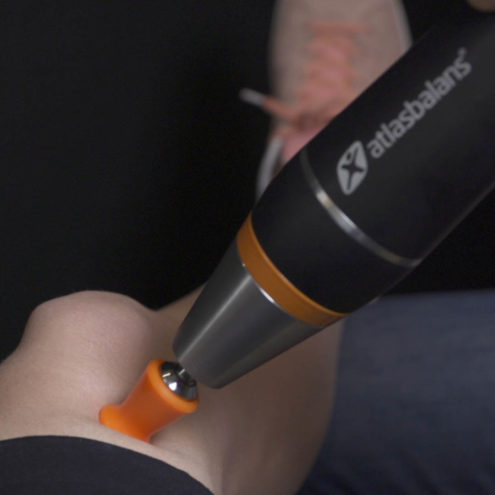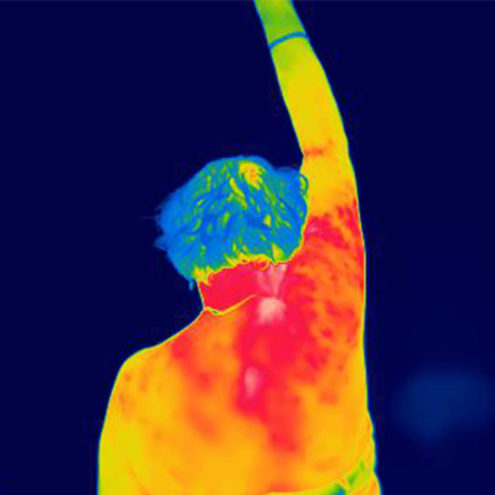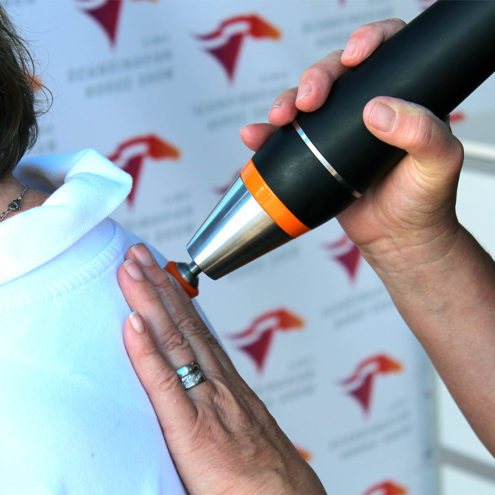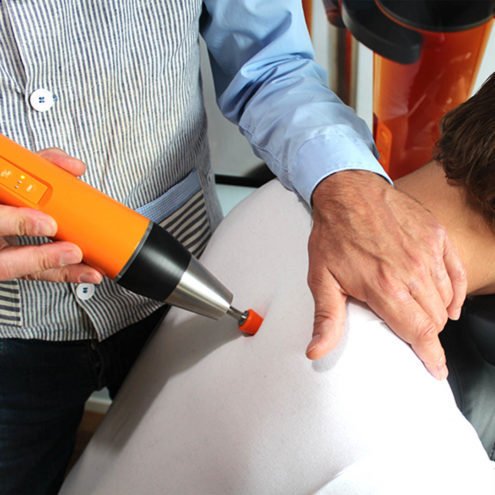Temporomandibular Arthritis: Causes and Treatment

What is temporomandibulitis?
Temporomandibular joint inflammation is a condition that affects the temporomandibular joints and the muscles around them. These joints are essential for our speech, chewing, biting, swallowing, and breathing. Inflammation of the temporomandibular joints can cause pain and impaired function, which can significantly affect quality of life.
Definition and anatomical overview
The temporomandibular joint, or temporomandibular joint (TMJ), is a hinged and sliding joint that connects the lower jaw (mandibula) to the temporal bone of the skull. Each temporomandibular joint consists of three main parts: the condyle (the round end of the lower jaw), the articular forehead (a recess in the temporal bone) and a meniscus (a cartilage disc) located between the condyle and the articular forehead. These structures work together to allow for smooth movements when opening and closing the mouth.
Common causes of temporomandibular joint inflammation
There are several causes of temporomandibular joint inflammation. The most common cause is overexertion of the jaw muscles but also injuries, and inflammatory diseases can lead to the temporomandibular joint becoming inflamed. Identifying the exact cause is crucial to offering effective treatment.
Why does temporomandibular joint inflammation occur?
Understanding the underlying causes of inflammation in the jaw can provide guidance on how to effectively treat the condition. If you are unsure of the cause of the inflammation or if you have sharp pain and problems moving the jaw, emergency care should be sought as soon as possible.
Overexertion of the jaw muscles
Overexertion of the jaw muscles is a common cause of temporomandibular joint inflammation. This may be due to:
Bruxism (teeth grinding): Grinding or squeezing your teeth, especially during the night, can overload the temporomandibular joints and muscles.
Excessive chewing: Chewing gum or hard objects for a long time can also lead to overexertion.
Stress: Stress and anxiety can lead to tension in the jaw muscles, which can cause pain and inflammation.
Trauma or injuries to the jaw
Injuries to the jaw can also lead to inflammation and pain:
Accidents: An injury to the jaw from an accident, such as a fall or a traffic accident, can damage the temporomandibular joints and cause inflammation.
Direct Stroke: A direct blow to the jaw, for example during sports activities, can also cause injuries and inflammation.
Inflammatory diseases or conditions
Some inflammatory diseases and conditions can affect the jaw joints:
Arthritis: Rheumatoid arthritis and osteoarthritis of the jaw can affect the temporomandibular joints and cause inflammation, pain and stiffness.
Infections: An infection of the temporomandibular joint can cause severe inflammation and pain.
Symptoms of temporomandibular joint inflammation
The symptoms of temporomandibular joint inflammation can vary depending on the cause and extent of the inflammation. Common symptoms include pain, difficulty moving the jaw, and sounds from the temporomandibular joint.
Pain or tenderness in the jaw
Local pain: Pain can be felt directly in the temporomandibular joint, making it difficult to chew or speak.
Radiating pain: The pain can also radiate to the ears, temples or neck. Pain that radiates to other parts of the body can make it difficult to identify temporomandibular joint inflammation.
Difficulty opening or closing the mouth
Limited movement: It may be difficult to open your mouth completely or close it without pain.
Locking: The jaw can sometimes lock in an open or closed position, making it impossible to move it normally.
Popping or clicking sounds when chewing or speaking
Sound from the temporomandibular joint: Snapping, clicking or cracking sounds may be heard when you open or close your mouth. Often it is an indication that the disc in the temporomandibular joint is not moving correctly.
Discomfort: These sounds can be accompanied by discomfort or pain, especially when chewing or speaking.
Treatment
The treatment of temporomandibular joint inflammation aims to relieve pain, improve the function of the temporomandibular joint, and prevent future problems. Depending on the cause and severity of the inflammation, different treatment methods may be used.
Diagnostics
An accurate diagnosis is the first step in treating temporomandibular joint inflammation. This may include:
Medical history: A detailed review of your symptoms, previous injuries and any underlying diseases.
Physical examination: Examination of the temporomandibular joint and the muscles around it to identify pain in the jaw, tenderness, and movement limitations.
Diagnostic imaging: X-rays, MRIs, or CT scans can be used to get a detailed view of the temporomandibular joint and identify any structural problems.
Treatment options
Treatment may include both medical and non-medical methods:
Painkillers and anti-inflammatory drugs: Over-the-counter medications like ibuprofen or acetaminophen can help relieve pain and reduce inflammation.
Muscle relaxants: Can be used to reduce muscle tension and improve range of motion.
Physiotherapy: Specific exercises and techniques to strengthen and stretch the jaw muscles and improve the mobility of the temporomandibular joint.
Splint: A specially adapted mouth guard can be used at night to prevent teeth grinding and reduce stress on the temporomandibular joint.
Injections: Cortisone injections can reduce inflammation and pain in the temporomandibular joint.
Lifestyle changes and self-care
To manage temporomandibular joint inflammation and prevent future problems, the following self-care measures may be effective:
Stress management: Relaxation techniques such as meditation and deep breathing can help reduce stress and muscle tension.
Dietary changes: Avoid hard and tough foods that require a lot of chewing. Instead, prefer soft and easy-to-chew foods.
Heat and Cold Therapy: Using heat or cooling compresses on the jaw can reduce pain and inflammation.
Good posture: Avoid resting your chin in your hand or using your phone by holding it between your shoulder and your ear, as this can strain the temporomandibular joint.
Surgical
In severe cases where conservative treatments do not provide relief, surgical procedures may be considered:
Arthroscopy: A minimally invasive procedure where a small camera is used to examine and treat problems in the temporomandibular joint.
Open surgery: May be necessary to repair or remove damaged parts of the temporomandibular joint.
How can we help you with temporomandibular joint inflammation?
By understanding the different causes and symptoms of inflammation in the jaw, Fascia Clinics can offer targeted fascia treatments that address both the immediate symptoms and the underlying causes.
The fascia is the network of connective tissue that connects and permeates everything in our body. All cells, tissues (even bone tissue), muscles, and organs contain fascia. The fascia is also very rich in pain receptors, so-called nociceptors, which react to stimuli such as pressure, and send signals to the central nervous system, where it is interpreted as pain.
At the Fascia Clinics, we have a holistic approach to the treatment of temporomandibular joint inflammation. Our team of therapists uses fascia therapy to relieve tension and pain.
A fascia treatment focuses on releasing tension and adhesions in the fascia and increasing its flow. Reduced pressure and increased circulation make it easier for the cell membranes to absorb nutrients and release waste products. In this way, a fascia treatment can promote the healing of the area.
The treatment provides a pleasant relaxation and does not hurt. The whole body’s flow starts and you get help to balance the posture so that the body is loaded evenly.
By combining medical expertise with personalized wellness, we can help you relieve pain, improve jaw function, and prevent future problems with temporomandibular joint inflammation. Contact us to discuss your symptoms and develop a treatment plan that suits your specific needs.
 Search
Search


































